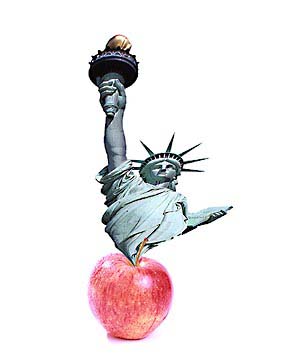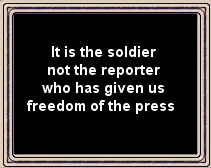
The November attacks revealed with painful clarity a Japanese strength: tenacity in defense. This strength reflected both a selfless fanaticism in support of imperial expansion and a mastery of field engineering. The Japanese simply made better use of the local terrain. Aware of the high water table of New Guinea coastal areas, the Americans relied on the fact that the enemy could not construct below-ground defenses. The Japanese proved the fallacy of Allied thinking by cutting trees and raising berms above ground, then concealing strongpoints with kunai grass and tying them together with interlocking fields of fire. As a result, approaching troops could not see the enemy bunkers until they were only about twenty feet away, by which time the Japanese had opened fire. Without armor or heavy artillery and air support, infantrymen could only crawl up to each bunker and jam hand grenades into firing slits, a process both slow and costly in casualties.

Disabled Bren gun carriers at Duropa Plantation. (DA photograph)
The Southwest Pacific Area was deeply concerned at the failure of the 32d Division's November attacks. Two weeks of offensive operations had produced 492 American casualties, and the enemy still held its positions. Staff officers wondered how much longer the underfed and diseased troops could keep fighting the Japanese and the climate of New Guinea. The international alliance that SWPA represented also showed strain, as Australians and Americans traded disparaging comments on their respective fighting abilities.
Changes were called for, and General MacArthur set them in motion. Summoning General Eichelberger, he bluntly told the corps commander, "Take Buna or don't come back alive!" Eichelberger immediately went forward to see conditions for himself. The enemy in front of the 32d Division now held a pocket stretching some four miles from Buna Village on the left to Duropa Plantation on the right. The fighting concentrated at two points along the enemy line, Urbana front on the extreme left and Warren front on the extreme right. Observing Urbana front on 2 December, Eichelberger found that the troops were exhausted, starved, feverish, and in tatters. Even worse, they had lost spirit, with some beginning to believe that the Japanese in their heavily timbered bunkers were unbeatable. Too many troops sat in rear-echelon aid stations on "rest" status. Although the I Corps commander considered the American troops still able to mount attacks, he saw much evidence that seemed to confirm the rumor he had heard in Port Moresby: that the 32d Division was near the breaking point.

Japanese Bunker in the Duropa Plantation. Cpl. Charles Claridge of Reedsburg, Wisconsin, is looking at the entrance
Eichelberger neither hesitated nor let personal feelings stand in his way. He immediately relieved General Harding, an old friend from the West Point class of 1909, as well as the commanders of both the Urbana and the Warren fronts. Preparations for the next round of attacks then went forward with several reasons for optimism. After more than a month of operating under combat conditions, the supply situation had improved noticeably. The troops had more food and some time to rest, and as a result their morale rose. The combat support situation, too, had improved. Eichelberger could expect more bombing sorties from Fifth Air Force and more artillery preparation. Best of all, the Americans could attack behind a spearhead of five Bren gun carriers, tracked vehicles with machine guns that might at last give the infantry an effective weapon against the nearly impregnable enemy bunkers.
The attack began in both the Australian and American sectors on 5 December. It soon developed into another Allied disaster. Within twenty minutes all the Bren gun carriers had been knocked out, and attacking infantry stalled all along the line. Now Eichelberger had experienced for himself the Japanese tenacity in defense. He ordered the troops on the Warren front to maintain positions and conduct local patrols, but the Urbana front remained very active. Showing the persistence necessary to match that of the Japanese, the 2d Battalion of the 126th mounted twelve attacks against enemy bunkers during 8-11 December, but it could not break through. For the first time, however, the Americans had a fresh reserve to draw on. With the recent arrival of the 127th Infantry, the 32d Division finally had its full complement of three infantry regiments. The 3d Battalion of the 127th now took over on the Urbana front.

Interior of a Japanese Bunker in the Duropa Plantation.
Note the sand-filled oil drums used to reinforce the palm-log structure.
In the Australian sector, the 7th Infantry Division kept up the pressure, assisted by Americans from the 126th Infantry who were showing commendable tenacity themselves in holding a roadblock before Sanananda against repeated Japanese attacks. On 9 December the 7th built up enough momentum to push through the enemy defenses and take Gona Village, the western anchor of the Japanese perimeter. The Australians had given the Allies their first major victory since Milne Bay in early September. Good news soon followed from the Urbana front. On 14 December the U.S. 3d Battalion overran Buna Village, pushing the remaining enemy into Buna Mission.
After the failure of the 5 December attack, Eichelberger decided that to have any chance of success he would have to change tactics. Fortunately the supply establishment at Port Moresby supported his determination: the tanks Harding had requested in November were finally on the way forward. They would spearhead the attack over the drier terrain of Warren front. With the new tanks came two fresh Australian battalions to reinforce the U.S. 128th Infantry. Australian Brigadier George F. Wootten would command the next series of Warren front attacks.
Anticipating Allied attacks, the Japanese conducted resupply missions by sea at night. Despite the best efforts of the Fifth Air Force, the enemy managed to put ashore during December about 1,300 fresh troops with supplies at several points west of Gona. These troops then made their way at night to Sanananda and Buna Mission.

Firing Pits and Bunker Entrances, Buna Mission.
The attack from Warren front began early on 18 December. Following a ten-minute air and artillery preparation, Wootten sent his new combined arms team ahead. The tanks immediately proved their worth by allowing infantrymen to get inside the enemy perimeter where, by enveloping successive bunkers, they overcame the opposition. The Allies had finally evolved the tactic to defeat Japanese bunker complexes. Over the next ten days the Warren force swept westward along the coast and reclaimed two airfields.
On the Urbana front, where the terrain did not support tanks, the fighting remained a desperate tree-by-tree, bunker-by-bunker struggle. Extremes of heroism were called for, and the troops responded. On the day before Christmas, Company I, 127th Infantry, had just cleaned out an enemy bunker only to be pinned down by a supporting strongpoint nearby. When 1st Sgt. Elmer J. Burr saw a hand grenade land next to his company commander, he immediately threw himself on it and absorbed the explosion with his own body. For his heroism Sergeant Burr received the first Medal of Honor awarded in the campaign. Later the same day Sgt. Kenneth E. Gruennert of Company L, 127th Infantry, volunteered to knock out two enemy bunkers that were holding up his company's advance. Crawling forward alone, he killed all the enemy in the first bunker by throwing grenades through the firing slits. Although severely wounded, Gruennert bandaged himself and set out against the second bunker. Throwing his grenades with great precision, the sergeant routed the enemy from their position. But before he could call his comrades forward, he was mortally wounded by snipers. For eliminating these two bunkers Sergeant Gruennert received the second Medal of Honor of the campaign.
By 28 December the Warren force closed with the Urbana force and accomplished a complete envelopment of the enemy. In coordinated attacks from 31 December to 2 January, the two forces met and flushed the Japanese from the jungle. As the Japanese swam toward remaining enemy enclaves to the west, machine guns fired on them from the beach, and aircraft came in for strafing runs.

Native Stretcher Bearers with Wounded American.
On the trail from the Buna Front to Simemi.
Now only Sanananda remained in Japanese hands. This lone enemy bastion consisted of one prepared position on the coast and several pockets of troops who had retreated from Gona and Buna. Units participating in the final offensive were now augmented by the U.S. 163d Infantry, the first regiment of the 41st Division to see action in the Pacific. Over the next twenty days the Allies overcame Japanese resistance with repeated artillery barrages, tank assaults, and infantry envelopments. The only slowdown in the Allied advance occurred when the enemy knocked out three tanks with special ammunition—ammunition that intelligence officers had reported as totally expended. The poor state of the enemy contributed as much to their defeat as did the Allies' gradually improving tactics. Without resupply for weeks, Japanese troops had only a few cartridges per man, and their rice ration ran out during the second week of January. When Allied troops broke through the last enemy defense line, they found evidence of cannibalism. Japanese resistance at Sanananda came to an end on 22 January, six months to the day after the Papua Campaign began.
Additional Sources:
home.st.net.au/~dunn/ozatwar







